Ozempic has become all the rage over the past couple of years as countless individuals, including a number of high-profile celebrities, are using the drug to lose a significant amount of weight – but a new simulation shows exactly how it works in disturbing fashion.
Exercise and diets have been the tried and tested routes for anyone wanting to shed some pounds, and while you can walk great lengths or even go for a run every single day, sometimes you need a little help or want to make the process a bit easier.
That’s where GLP-1 inhibitors – known broadly under names like Ozempic, Wegovy, and Mounjaro – come in as they dramatically effect how your body functions to allow you to lose weight more efficiently.
Elon Musk has previously argued that using GLP-1 inhibitors would ‘save America’s health crisis’, backing it up by using one himself over the holiday period, and a number of other key celebrities like Oprah Winfrey and Rebel Wilson have discussed their use of the drug to lose weight.
However, while its results are hard to deny, it can cause a number of worrying side effects which have been revealed in great detail through a new simulation.
Created by Zack D. Films on YouTube, known for his informative and often hilarious simulations, one of his newest videos shows the scientific process of what happens to your body when you take a GLP-1 inhibitor like Ozempic.
The first thing you’ll encounter after taking Ozempic and allowing it to pass through your blood stream is a reduction in your appetite, as the drug specifically activates the parts of your brain that signal that you’re full.
Additionally, your blood sugar is stabilized by the drug in order to avoid sudden cravings, which often amount to unhealthy treats that will cause you to gain weight at a faster rate.
It also slows down how fast your stomach empties food, which will contribute to a reduced feeling of hunger across a longer period of time, which is essential to making you eat less.
While Ozempic is not a magic bullet by any means which makes you lose weight with zero effort, it should in theory noticeably reduce the amount that you’re eating every day, which over time will quickly allow you to drop some pounds.
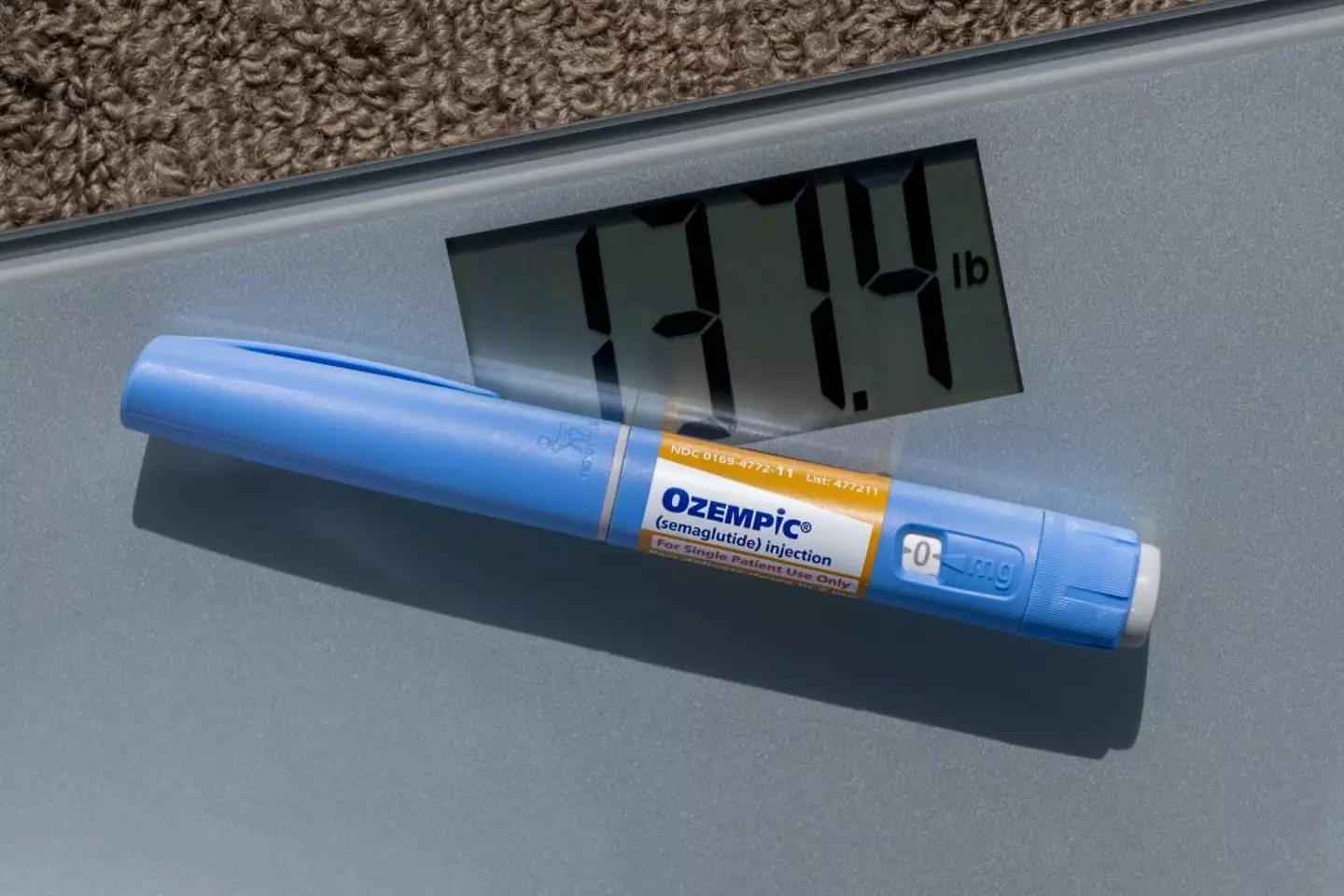

Ozempic stops you from eating in a number of different ways (Michael Siluk/UCG/Universal Images Group via Getty Images)
Like almost every other weight loss method though, Ozempic isn’t free of side effects. Most commonly it’ll make some people feel sick – which is a feature that it shares with the Keto diet, another popular weight loss method.
Additionally, it can even lead to diarrhea, which Zack has wonderfully recreated in the simulation through a trail of poo as our Ozempic-taker runs to the toilet.
“Tbh, watching Zack’s animations make me lose my appetite more than Ozempic,” writes one user in reaction to the ending, with another adding that “the detailed visuals and auditory EFFECTS are GOLD.”
Regardless of the hilarity of Zack’s animations, it goes to show that it isn’t the magic cure-all drug that you might expect, and it comes with challenges that you’d have to be willing to face – especially as Ozempic specifically isn’t FDA approved at this point in time


It’s a strange phenomenon that many chalk off as simply having too much fun, but it could be harmful to your body, brain, and overall health, so you might want to avoid going too far in the future.
Strange things have been shown to happen to your body when you consume alcohol, and while your phone might be able to tell whether you’ve had a bit to much soon, simulations have shown the horrifying reality of what happens when you drink and drive.
If you’re sensible enough to not sit behind the wheel, but perhaps lax enough to drink beyond your limit, then you might run into a situation where your memories of the night before have strangely vanished.
This situation has thankfully been explained by Insider Science, and it’s all to do with the different functions of your brain and how they interact with excessive alcohol consumption.
Science explains that your prefrontal cortex is where your brain stores short term memories, which eventually develop into fully structured long term memories in the hippocampus.
For these two functions to work your brain requires neurotransmitters like N-methyl D-aspartate (NMDA) and Gamma-aminobutyric acid (GABA), yet alcohol stops these from working correctly.
All levels of drunk aren’t created equally either, as the amount of alcohol you consume – alongside its strength – directly correlates to how affected these neurotransmitters are, and consequently how much you remember.
Let’s say you’re male and around 73kg/160lbs – it would only take you around eight shots in an hour to reach a blood-alcohol level of around 0.2%, which is likely to put you in a ‘greyout’ or ‘fragmentary blackout’ state where you’ll be able to remember some things the next morning, but with big gaps or holes.
Keep drinking beyond this though and you put yourself in danger of reaching a full blackout, which you scarily won’t even realize until the next morning when you’re left with no recollection of the events that occurred the night before.
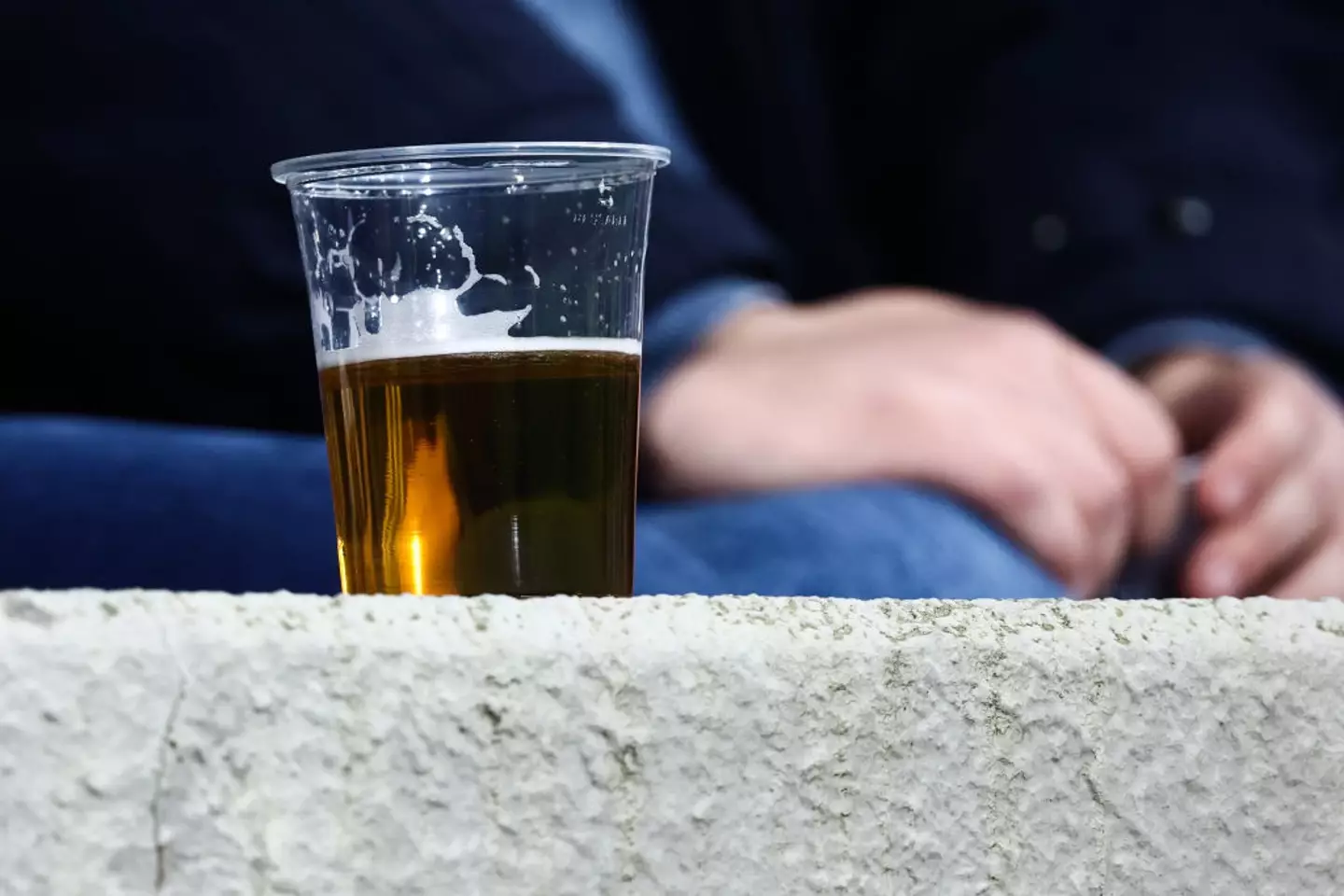

One beer too many could make you lose your memory (Jakub Porzycki/NurPhoto via Getty Images)
You could be behaving perfectly normally – at least for someone who’s had a lot to drink – yet your health could be at danger, and drinking much more beyond this could even put you at risk of death.
How much you’re affected by this very much depends on factors like your sex, weight, and family history, but if you’re finding that you consistently don’t remember nights out then it’s maybe something to think about.
Many of the comments reflect this sentiment, as one user explains: “Yup my blackouts are bad. Losing control and memory is terrifying. No more.”
“I remember the first time I had a black out,” another user details, “It’s so scary the next morning because all you remember is doing something normal then literally black. I have no idea what happened that night but I know it was really bad.”
Sometimes it’s best to put your health first, even at the expense of a fun night out – it’s not like you’d remember it anyway!


The Keto diet has worked for many when it comes to weight loss measures, but it can have harmful effects on your body that are difficult for doctors and scientists to measure over long periods of time.
In a sea of fad diets and lose weight quick tricks, the Ketogenic diet – otherwise known as Keto – is one that appears to genuinely work for many.
Instead of simply cutting out ‘bad’ foods and replacing them with ‘good’ ones, Keto completely changes your dietary structure in order to adjust how your body reacts to certain food types.
This is primarily through the high-fat, low-carb approach which is almost an inverse of what many people consume on a day-to-day basis, and this shift causes your metabolism to react, often leading to a loss in weight.
It’s not all good news though, as while the fast-acting diet does show results in almost everyone that tries it, an Insider Science YouTube video outlines that it can have dangerous side effects on your body that you’ll want to avoid.
As mentioned, Keto recommends that you maintain a diet of around 70% fat, 25% protein, and just 5% carbohydrates. This is drastically different to the recommended intake of around 30% fat, 20-35% protein, and 50% carbohydrates, and your body likely doesn’t know how to react.
When burning carbs your body produces glucose, which is a form of sugar that energizes and fuels your body, so when that isn’t present your body instead starts burning fat.
While this does understandably lead to a quick drop in your overall body weight, it also increases the amount of insulin that is generated, which in turn releases more sodium into your blood.
Increased sodium levels then causes what many call the ‘Keto flu’ with side effects of nausea, fatigue, headaches, and more, which feels like an inevitability that many have to power through at the start of the diet.
You’ll also find that you need to pee far more and you can experience less-than-idea symptoms of diarrhea or dehydration, as the drop in carbohydrates also results in reduced levels of glycogen which stores water in your body. You’ll find that the weight you’re losing – at least at the start – is actually more likely to be water than fat, and this can have dangerous side effects if you’re not careful.


High fat foods like red meat are perfect for the Keto diet (JP Yim/Getty Images for NYCWFF)
Furthermore, while the Keto diet does actually reduce the symptoms of epilepsy, children who remain on the diet due to this can suffer kidney stones, high cholesterol, and even bone fractures.
Perhaps the final nail in the coffin for understanding Keto though is the fact that many people don’t stay on the diet long enough for scientists to truly understand its lasting effects.
This is due to what’s known as the ‘Keto plateau’, where the rapid weight losses at the start of the diet start to even out to a point where you’re not really dropping any more despite eating the same way.
It’s understandable then that many wouldn’t want to continue to adhere to something this strict that causes the aforementioned side effects, but many remain concerned that we’ll never truly understand Keto without long-term exposure.


A new simulation shows what vaping does to your lungs and it’s not pretty.
We all know vaping isn’t exactly good for us. Whilst it’s pitched as a safer alternative to smoking, it doesn’t mean it’s risk-free.
More worryingly, it’s also become a huge trend among younger generations. According to Action on Smoking and Health (ASH), in 2024, 18% of 11–17-year-olds had tried vaping, and 7.2% were current vapers.
That said, the consequences of long-term vaping on our health are yet to be discovered, according to the NHS.
Yet hearing stories like the man who had only a 1% chance of survival after getting hooked on vaping, or the 17-year-old who needed surgery to remove part of her lung is enough to make you put that berry-flavoured pen down for good.
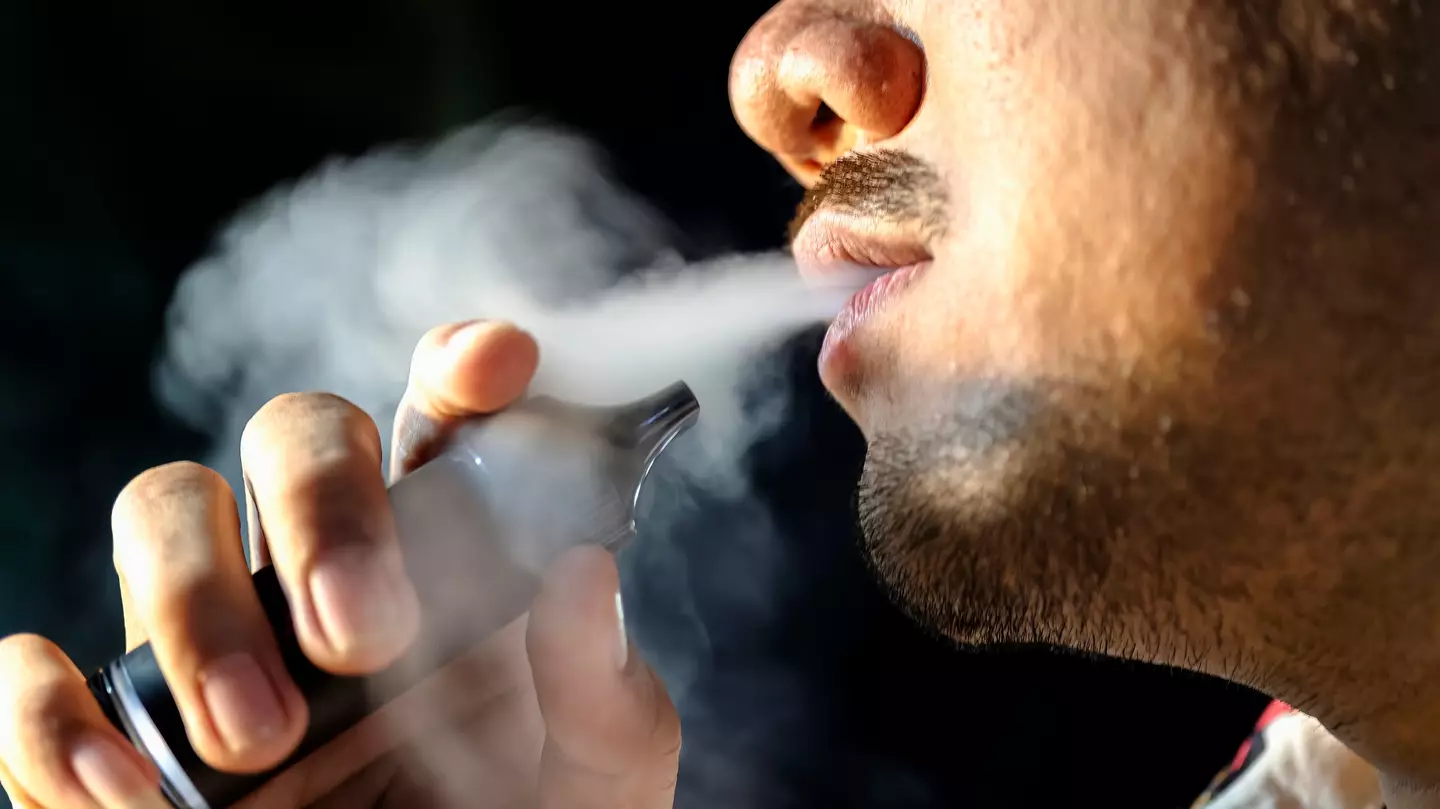

Now, what actually happens when we ingest the chemicals has been terrifyingly illustrated in a simulation on YouTube.
Thanks to The Infographics Show, we can understand what happens to your lungs when you take a hit of an e-cigarette.
When you inhale from a vape, chemicals coat your lungs, leading to a mucus buildup on the alveoli (the tiny air sacs that help you breathe). The simulation shows that the chemicals can have a damaging ‘paralytic effect’ on the lungs and the cilia.
It takes weeks for them to recover, and during that time, your body is way more vulnerable to infections and respiratory issues.
“Research on vaping-related harm is rapidly developing. Current evidence suggests vapes are less harmful than smoking tobacco products, but they aren’t risk-free,” the NHS states.
Most vapes contain nicotine, which is highly addictive. They also contain other chemicals like propylene glycol, glycerine and flavourings – none of which belong in your lungs, the NHS explains.
One of the biggest concerns with vaping is its appeal to teenagers. With flavours like bubblegum and blue raspberry, it’s attracting the eyes of younger people who are getting hooked to this relatively new phenomenon.
A 2023 study found that 4.6% of middle school students (ages 11-14) and 10% of high school students (ages 14-18) reported using e-cigarettes, according to the CDC. That adds up to 2.13 million students in the US alone.
The science is still lacking in this area, especially on the long-term effects of vaping. But some research is starting to connect the dots.
A recent study in The Journal of Nuclear Medicine compared lung inflammation in vapers vs. non-smokers.
It turns out those who used e-cigarettes were associated with lung inflammation and inflammatory lung disease, both causing wheezing, breathing problems, and chest pain and tightness, as per Very Well Health.


Whether in a bid to give up smoking or for a bit of fun on a night out, many of us have picked up a vape at some point.
But, while vaping was initially thought to be better for you than traditional cigarettes, there’s a whole load of evidence suggesting that regularly puffing on that pineapple-flavored air could be seriously damaging to our health.
A simulation of what happens in your body when you vape has revealed just how harmful it can be.
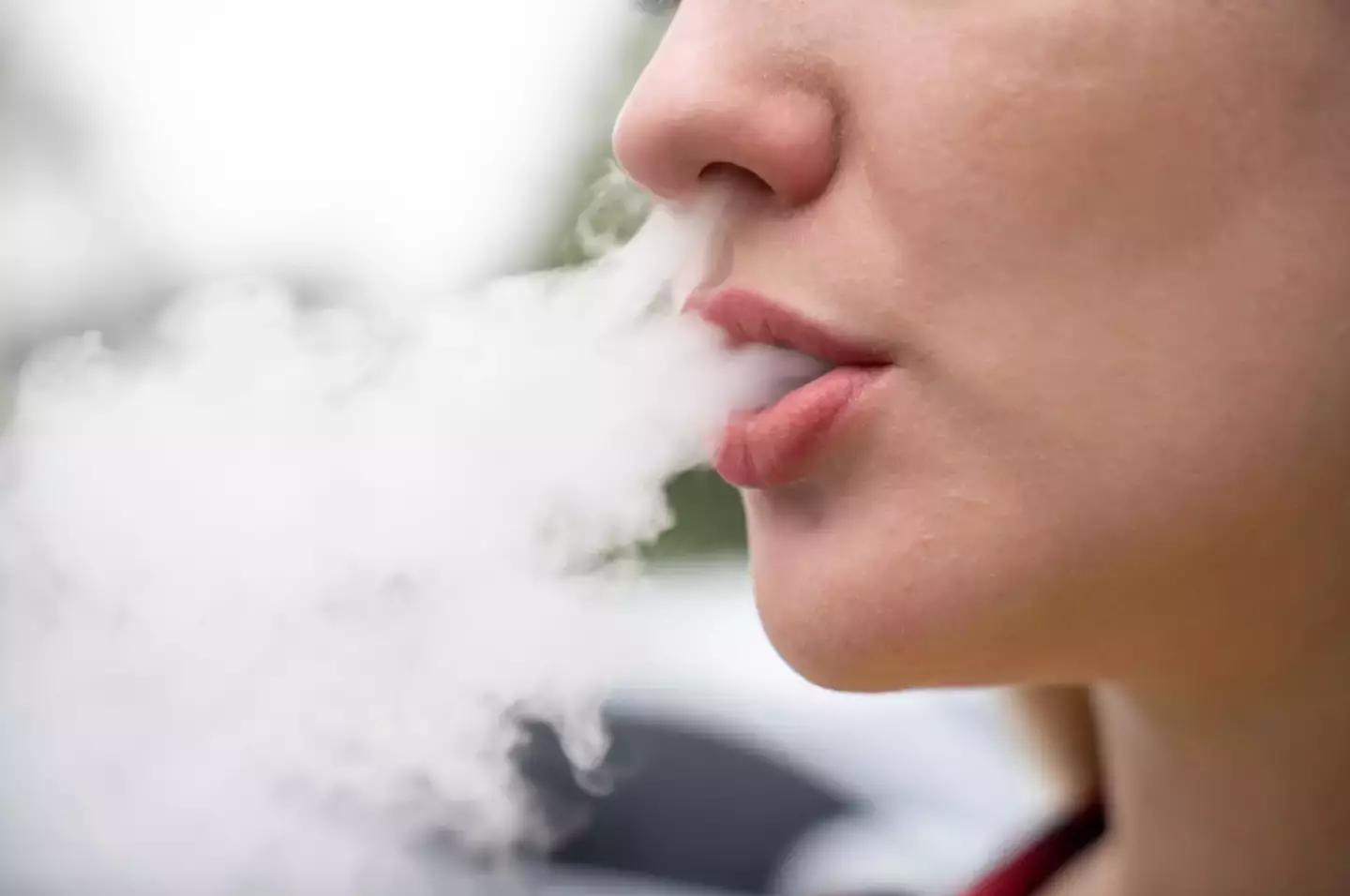

Vaping is sometimes thought to be a ‘healthier’ alternative to smoking but this is not the case (seksan Mongkhonkhamsao/Getty Images)
Most vapes consist of a mouthpiece, battery, heating element and a pod that holds e-liquid – a solution containing nicotine, flavorings and other chemicals.
When the liquid is drawn out of pod as you breathe in on the mouthpiece, it is vaporized by the heating element and inhaled like cigarette smoke.
While vaping is typically considered a ‘healthier’ alternative to smoking, it turns out there’s a lot to worry about when it comes to puffing on the chemicals inside.
In 2019, the US had an outbreak of more than 1600 cases of unexplained lung injury, with 34 people dying as a result. 92 percent of patients later admitted that they’d used black-market THC vape cartridges.
The lung condition, now known as E-Cigarette or Vaping Associated Lung Injury (EVALI), is caused in part by vitamin E acetate, a synthetic found in the e-liquid.
This is just one of several chemicals that are in vape juices.
Another common ingredient is diacetyl – an artificial flavoring found in fruity drinks that also adds the butter flavor to microwave popcorn.
A 2015 study by the Environmental Health Perspectives revealed that out of 51 tested e-liquid flavors, 39 contained the chemical.
But, while it’s safe to ingest, you definitely do not want it in your lungs.
A simulation shows what happens if you regularly inhale diacetyl, and it’s enough to put you off for life.
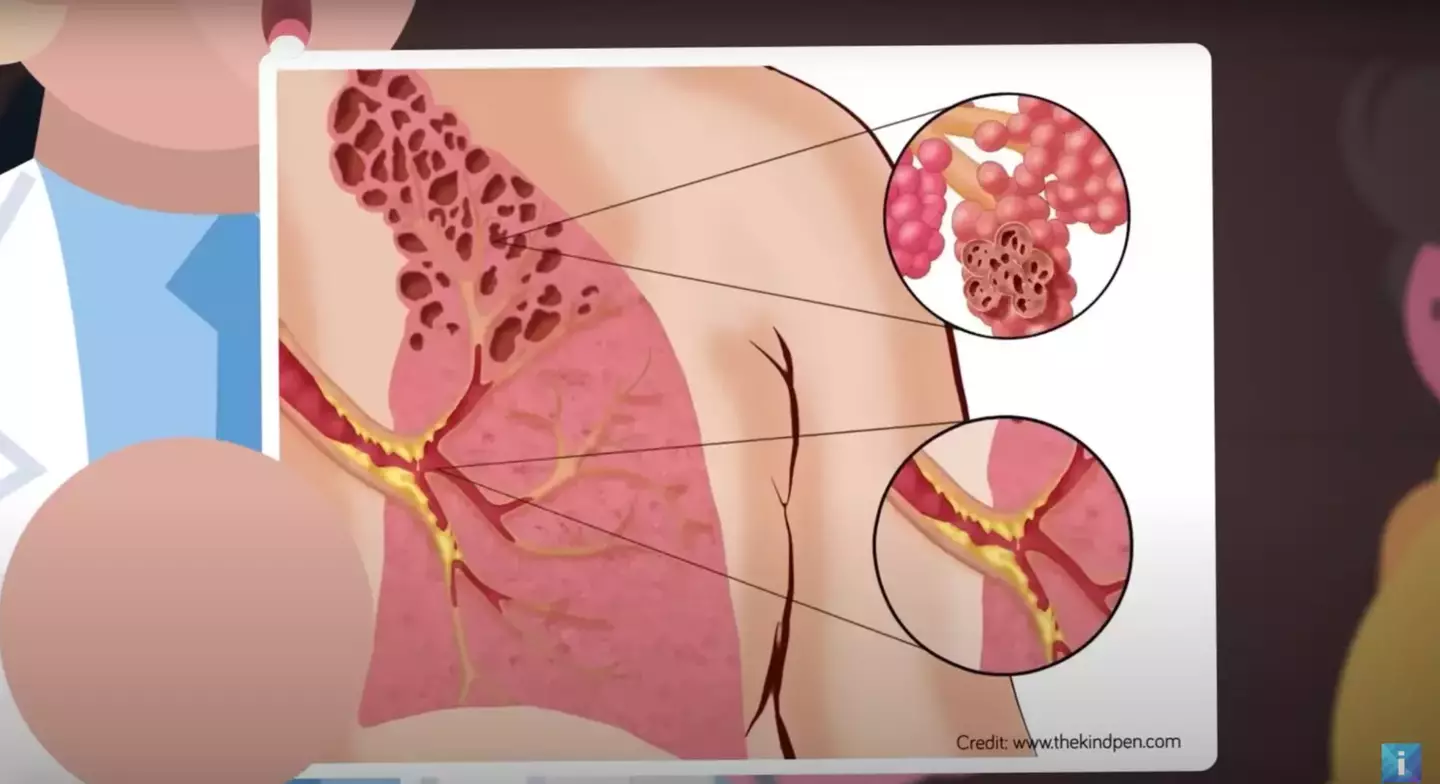

A simulation on YouTube shows just how damaging e-liquid can be to your lungs (YouTube/The Infographics Show)
The simulation shows the build up of mucus in the lungs and damage to the alveoli, which is the primary site of gas exchange between the blood and inhaled air.
This can develop into a chronic condition known as bronchiolitis obliterans, also known as ‘popcorn lung.’
It was first discovered in a popcorn factory, where workers spent so much time with diacetyl that it became toxic, causing the bronchioles in the lungs to become inflamed, damaged and even scarred.
Common symptoms of popcorn lung include coughing, wheezing and shortness of breath and the damage isn’t always reversible, resulting in the need for life-long treatment.